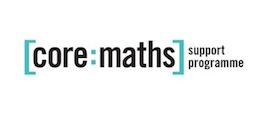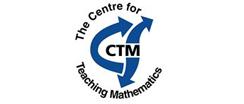Statistical Sampling
AS Level
- Understand and use the terms ‘population’ and ‘sample’
- Use samples to make informal inferences about the population
- Understand and use sampling techniques, including simple random sampling and opportunity sampling
- Select or critique sampling techniques in the context of solving a statistical problem, including understanding that different samples can lead to different conclusions about the population.
- ALL
- Teacher guidance
- Presentation
- Activity sheet
- Other
Teacher guidance
Chapter 3: Using Random Samples of Real Data
This chapter in the booklet Relevant and Engaging Statistics and Data Handling from the Royal Statistical Society Centre for Statistical Education (RSSCSE) describes the steps needed to both take and use random samples of real data from the CensusAtSchool website. In addition it offers some ideas to allow students to use samples of real data in their data handling and statistics lessons.
Access to a computer and a spreadsheet is required.
Inflation
From the Integrating Mathematical Problem Solving project by Mathematics in Education and Industry (MEI), this activity for post-16 students shows how regular sampling of a variety of prices is used to get a measure of inflation.
The mathematical ideas covered are
• Index numbers
• Weighted averages
• Statistical sampling
• Percentage change
Psychology - Correlation Study
This resource from the Integrating Mathematical Problem Solving project by Mathematics in Education and Industry (MEI) invites students shows that correlation can be used to measure the strength of a linear relationship and that different samples from the same population can give different results.
Teacher notes and sample data are provided. The unit builds on an assumed knowledge of scatter diagrams and basic ideas of correlation from GCSE.
Presentation
Population Data
This resource contains seven activities related to population statistics.
Population Change Information Sheet is an extensive document which can be made available or use by students.
Lesson 1 analyses the relationship between birth rates, death rates and population growth, and how all of these tend to vary as a country becomes more developed. Students need to interpret and draw bar charts showing the relative size of different age groups within populations. They also need to draw line graphs.
Lesson 2 is concerned with how we can select a fair sample? Sampling methods covered are random, systematic, cluster sampling, stratified and quota sampling. Students are encouraged to see that the real challenge of sampling is to devise the smallest sample size that will yield reliable results.
Lesson 3 deals with diagrams representing data. It examines the difference between birth and death rate in different countries. Students need to use a sampling process then draw various types of bar chart and radar diagram. They are asked to compare the diagrams drawn from their sample of data with the full data set illustrated in the presentation. Teacher notes within the presentation give support and advice about the lesson.
Activity sheet
Exploring Statistics
This CIMT resource is designed to provide a series of short problems to stimulate discussion of statistics and to provide some longer investigations which search more deeply into the student’s understanding of statistics.
Student material 1: what happens if? consists of sixty problems. The problems from 42 to 60 involve sampling. Teacher Materials Part 1 provide solutionsand give further hints.
Student material 2: short investigations contains ten short investigations. Investigations 4, 8, 9 and 10 involve sampling. Teacher Materials Part 2 provides solutions.
Student material 3: long investigations consists of ten longer investigations which cover a variety of topics and are suitable for students at different levels. Investigations 15 and 20 involve sampling. Teacher Materials Part 2 provides solutions.
Student material 4: statistics hints and nudges provides ‘hints and nudges’ for students. They provide a more structured route through an investigation for those who need it. Teacher Materials Part 2 provides solutions.
Sampling
The activities in this workbook are designed to help students to understand what happens when a sample is taken, how to calculate the confidence interval for a mean and what this interval represents.
The first three spreadsheets consider samples taken from a normal distribution, a uniform distribution and an exponential distribution respectively. In each case, students compare the variability of the sample mean when different sample sizes are used. Work card 6.1/2/3 support student use of these spreadsheets.
The next three spreadsheets investigate the sampling distribution of the mean when sampling from a normal, uniform and an exponential distribution. Students are able to alter the sample size and the number of samples considered. Work card 6.4/5/6 support student use of these spreadsheets.
The next spreadsheet is designed to enable students understand how a confidence interval for a population mean is calculated. Students are able to alter the percentage degree of confidence, the sample mean, the sample size and the standard deviation of the population mean thus determine what effect these alterations have on the size of the confidence interval. Work card 6.7 support student use of this spreadsheet.
The next spreadsheet is designed to enable students understand how a confidence interval for a population proportion is calculated. Students are able to alter the percentage degree of confidence, the sample proportion and the sample size and thus determine what effect these alterations have on the size of the confidence interval. Work card 6.8 support student use of this spreadsheet and poses further challenges.
The final spreadsheet is designed to help students understand how often the confidence interval does include the mean of the population. Students are able to alter the size of the sample, the population mean and standard deviation and the percentage degree of confidence. A chart makes it easy to see whether the population mean lies within the confidence interval for a number of different samples. Work card 6.9 support student use of this spreadsheet and poses further challenges.
Parking Permits
In this activity from the Nuffield Foundation, which uses a scenario of parking permits at a college to introduce the topic, students learn about collecting data by stratified sampling and designing a questionnaire.
A full review of relevant statistical terms is provided, together with instructions of how to select a representative sample and how to use random numbers to select a sample. There are also prompts of practical issues to consider and key factors to implement when designing a questionnaire.
Key mathematical language is: data, qualitative, quantitative, discrete, continuous, primary, secondary, population, census, sample, random, bias, representative, stratified sampling, questionnaire
Other
Navigating numbers: the ONS data education programme
This resource is designed to help students understand how and why the ONS uses the public’s data to produce statistics. It includes a series of five classroom toolkits centred around an Office for National Statistics (ONS) tool or dataset that relates to a part of everyday life, including the gender pay gap; inflation; the census and understanding population dynamics; health and well-being and business, industry and trade.








